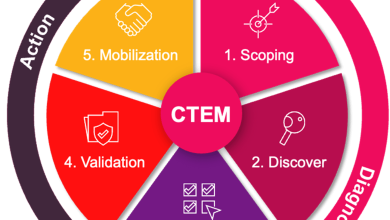
Artificial intelligence is no longer a future concept; it’s already transforming the way Australians travel and insurers respond when things go wrong. Pairing this technology with real human expertise remains essential in treating customer data and privacy with the utmost care.
While automation is a key benefit, AI’s real power lies in enabling faster, smarter, and fairer service across the board, especially as customers increasingly expect digital-first, responsive support.
4 Ways AI is Changing the Travel Insurance Industry in 2025
Quicker Claim Handling
One of the main ways AI is used within Australian travel insurance is for claims handling. It can speed up claim processing and regulate decision-making, compared to manual methods which involve multiple steps, paperwork, and follow-ups.
In fact, 2025 findings show that almost nine in ten Australian insurers use generative AI in their claims operations.
AI’s abilities span from sorting claims to identifying missing documentation and flagging issues that require human review. This is particularly useful during peak travel periods, when there are more claims coming through and insurers must manage requests efficiently without compromising service quality.
Some AI models automatically organise claims and direct high-priority or higher-risk cases to human teams. For policyholders, this can mean faster updates, clearer status tracking, and prompt resolutions, particularly in more straightforward cases where the claim details are well-documented. Within these processes, human oversight is imperative to making sure customer data is handled responsibly and their privacy is protected, both of which remain the top priority.
Streamlining Internal Workflows
AI is also used to fast-track customer service, document management, and data checking.
For example, natural language processing tools can help summarise incoming queries or pick out relevant policy details from emails and attachments. Machine learning models can also use past data to help insurers identify trends without time-consuming manual work.
With AI technology automating the repetitive, simple jobs, staff can focus on more urgent tasks. This can create more efficient, sustainable workflows, particularly in the travel insurance industry where accuracy and documentation are key.
Changes in Customer Expectations
Shifting customer standards shape how travel insurance providers deliver online services.
A study by Ernst & Young found that roughly 99% of insurers globally are already investing in AI or are interested in doing so for the cost benefits, and to keep up with customer expectations of fast service.
With more consumers moving to digital spaces to quickly and efficiently handle their insurance and get support, AI can be a huge help.
For instance, automated chat responses and email classification tools can directly address routine customer questions or requests. This can offer faster responses, particularly outside of regular business hours.
However, Australian insurers are finding ways to ensure that more complicated or sensitive matters are still handled by experienced claims staff. Human oversight plays an important role in building customer confidence, particularly when it comes to the handling of customer’s personal and confidential information. In these cases, artificial intelligence is generally used to assist claims processes, rather than replace human involvement. It’s a win-win for insurers and customers — AI is being used to support human service, not replace it.
Data and Risk Modelling
There is also a focus on AI’s ability to analyse large volumes of data to inform decision-making and risk assessment.
AI models may assist in identifying new trends or gaps in coverage by studying patterns across previous claims or customer experiences. Some systems can also help visualise these trends, giving insurers a clearer view of their portfolio and operational risks.
As Australian insurers increasingly use AI in these contexts, they are required to take extra steps to ensure transparency, fairness, and data privacy. This includes obeying local (and international) legal and regulatory responsibilities like the Privacy Act, as well as relevant financial services laws such as Corporations Act 2001 (Cth) and ASIC Act 2001 (Cth). In response, many organisations are taking a slow, structured approach to AI integration with strict human oversight.
A Slow and Steady Transition to AI in Insurance
There is no one way for Australian travel insurance companies to bring in AI.
While the technology doesn’t eliminate the need for human input, it can help teams work smarter, reduce delays, and enhance service consistency across different customer touchpoints.
Regardless of the approach, it’s usually a gradual transition and starts with specific use cases, such as organising claims or checking documents. The global market for AI in insurance claims processing is expected to reach $850 million by 2029, so these steps reflect how industries are moving from traditional methods to more dynamic, responsive digital service models.
What’s Ahead
Looking ahead, AI-powered voice support, fraud detection, and behavioural analytics may all play a role in helping insurers stay ahead of traveller needs. But innovation can’t come at the cost of fairness or clarity.
Even as the tech evolves, we remain committed to the values that matter most: trust, transparency, and support when travellers need it most.




